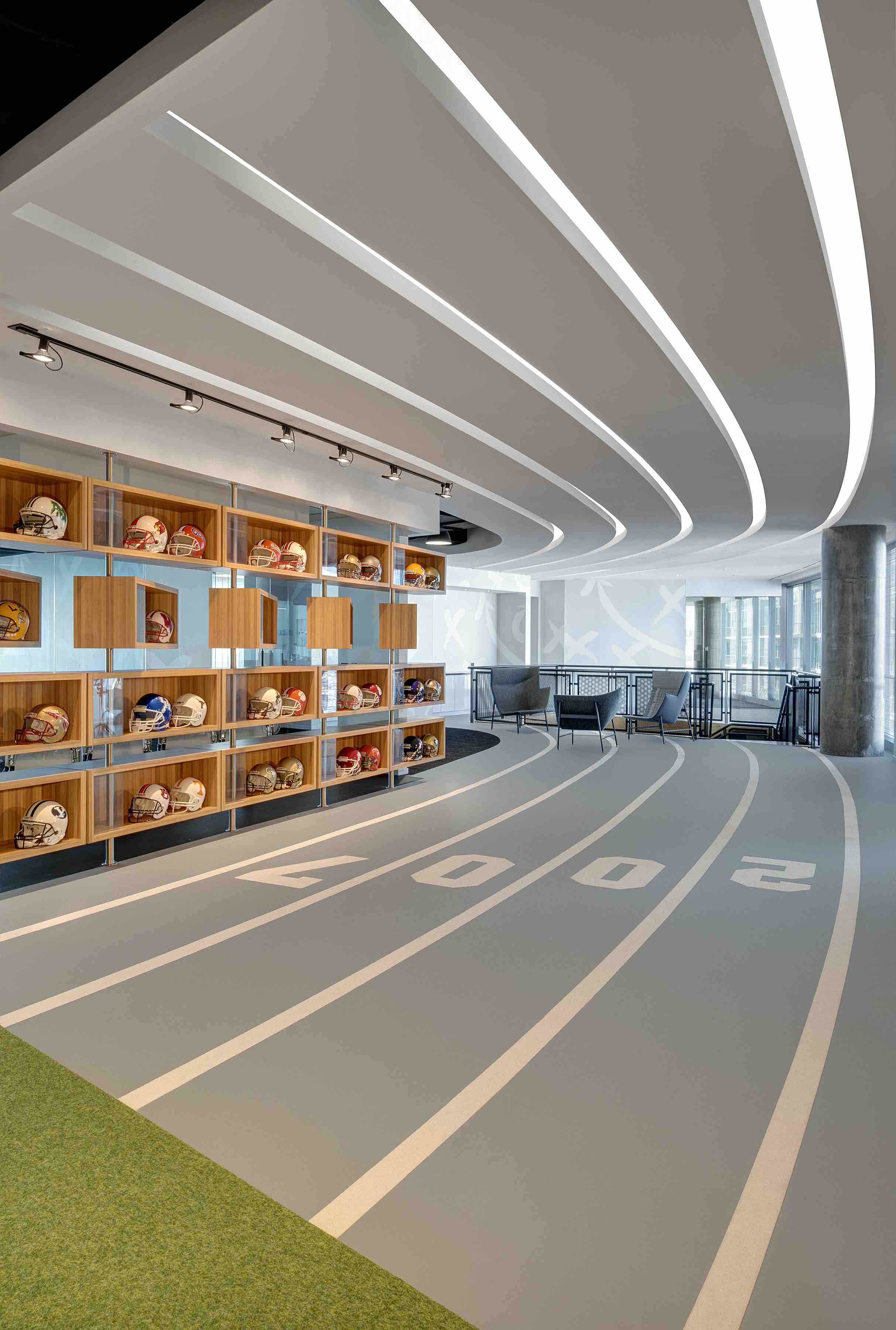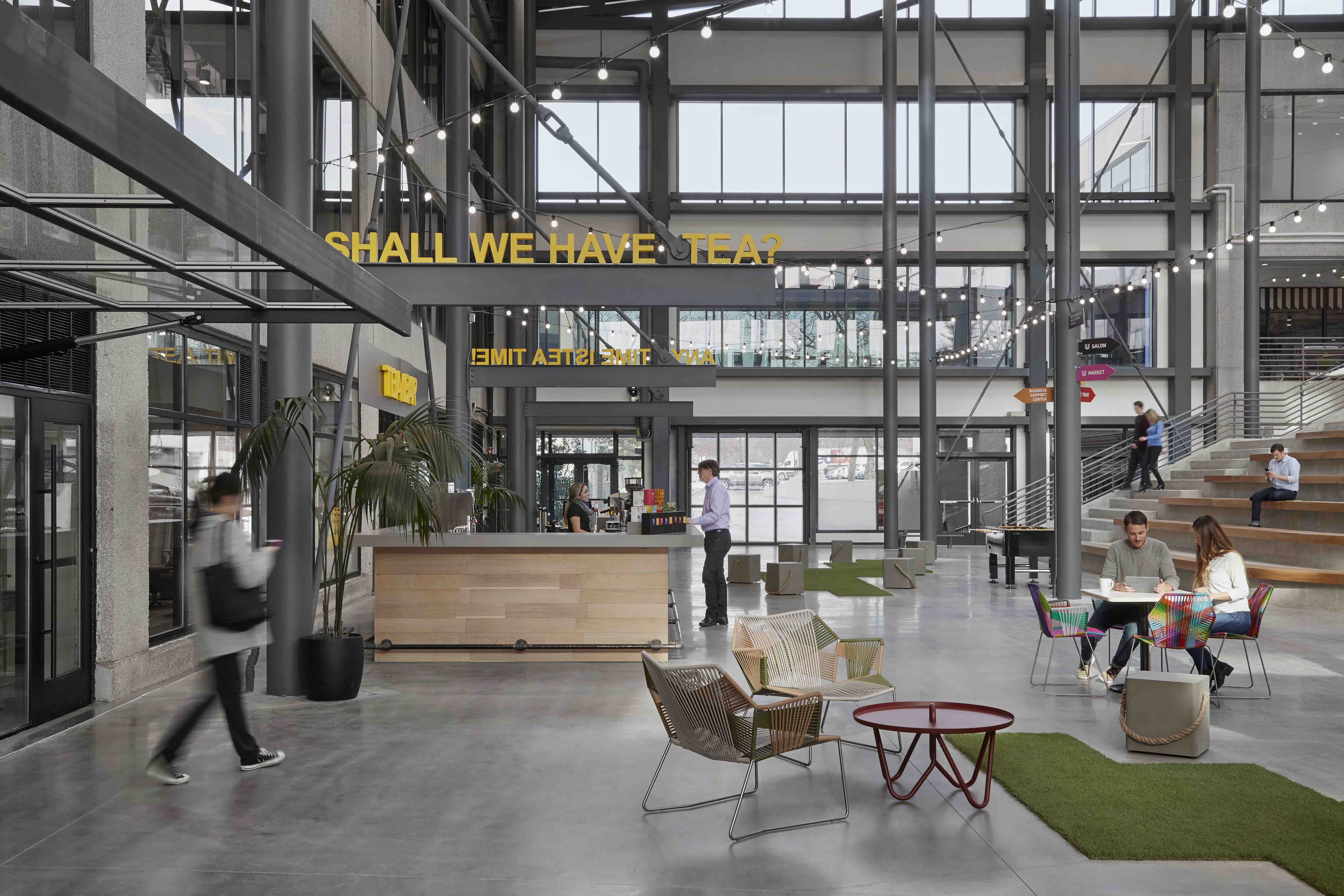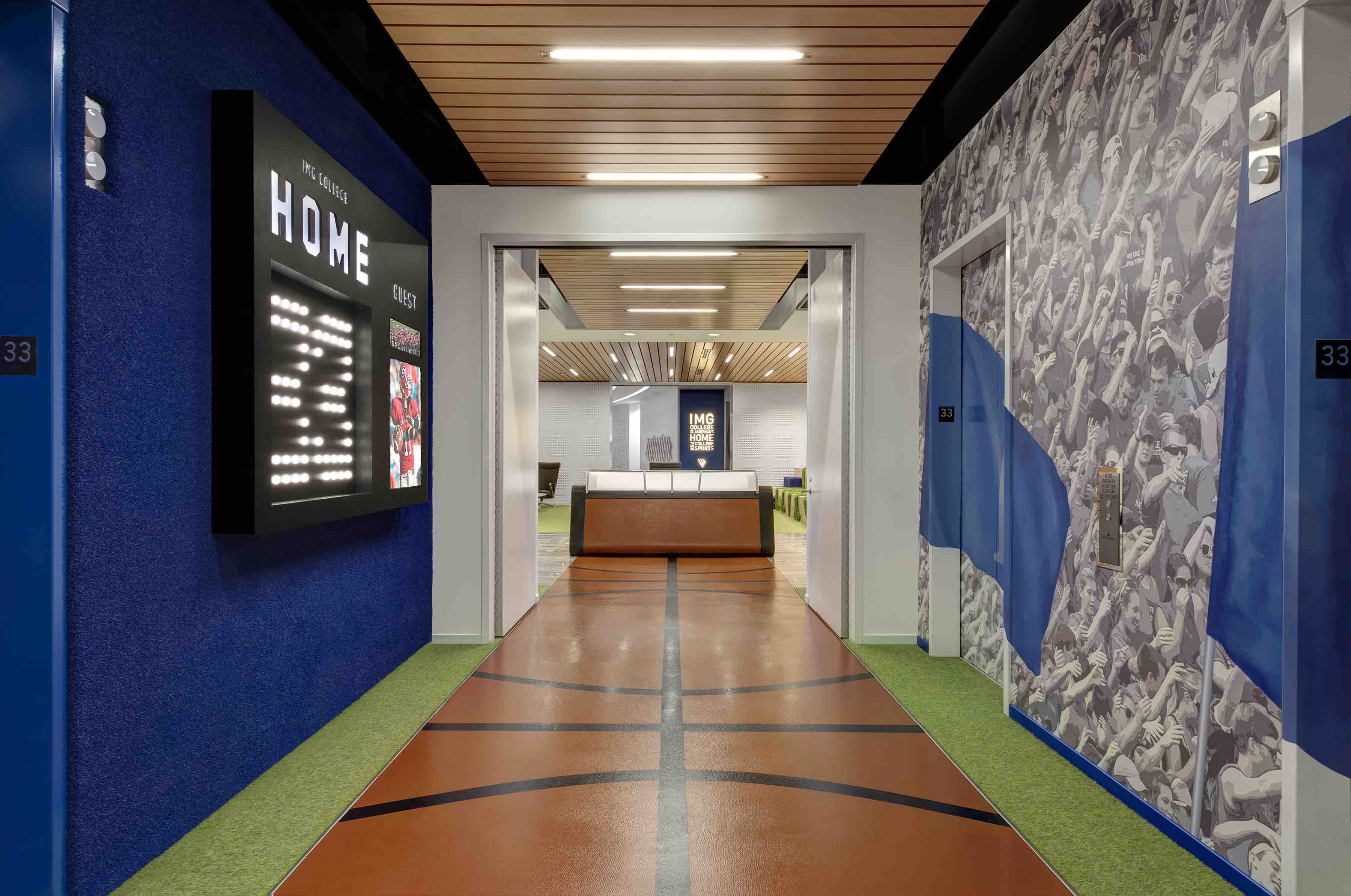Companies are now turning to architects and designers to provide them with an experiential space that has meaning, authenticity, and tells their brand story. Are Architects the new Brand storytellers?

Today, designers are just as valuable brand storytellers as any marketing campaign. We are social scientists. We have the ability to impact human behavior through our design decisions, influencing emotional connection to space in such a way to spark a sense of belonging and purpose.
This is no truer than in the workplace, as companies increasingly leverage the experience of space as a window into who they are. There’s a growing recognition of how meaningful design can transform corporate cultures and positively impact business performance. Now, more than ever, companies seek out designers that can provide deeper meaning and authentic experiences within the environments we create – they look to us to tell the story of their brand.
CHAPTER 1: IT STARTS WITH WHY

We enter into every project by asking the why of it. Regardless of client, location or market, designers must remember we are designing for people, first and foremost. At Perkins and Will, we keep our eyes and ears open to every nuance, to every why? and how come? to develop highly branded experiences with a level engagement and emotional connection that sets our clients apart.
When Unilever asked Perkins and Will to overhaul their suburban campus in New Jersey – the why of it was to create a workplace that would tell the global brand’s sustainability story, while also functioning as a recruitment tool to attract the best and brightest talent.
We saw this as an opportunity to unify the company’s collective brand stories under one roof, while also educating users about their commitment to climate consciousness at every scale.
This ranged from small interventions, such as a reception desk made out of trees recycled from the site to larger interventions, including the integration of smart technology, with employees having the option to control room conditions from their phone screens. Additionally, the campus was equipped with over 15,000 sensors used to measure temperature, light, carbon dioxide, humidity, and who’s present in a room, helping the building adjust over time to become more efficient.
Not only was Unilever’s sustainability story unpacked through a variety of design interventions, but the spaces also encouraged employees to be active participants in lowering the building’s carbon footprint, making them part of the brand story themselves.
CHAPTER 2: TAPPING INTO EMOTIONS

In today’s highly competitive world of workplace design, effective brand storytelling is so much more than an oversized logo or illuminated signage.
As designers, we must continuously strive to understand our audience – the end-user – and build spaces that reach both their hearts and minds. A large part of this leveraging design to create moments or memorable experiences that take users on an emotional journey through the company’s brand.
When Perkins and Will was enlisted by Endeavor formally IMG College – the largest collegiate sports marketing company in the US – to reimagine their new office space, we saw this as an opportunity to take users on the journey of a college sports fan.
Throughout the space, our design team created an emotional connection to the sports industry with the use of lighting, textures, patterning, and subtle brand messaging interventions. Stepping off the elevator, employees and visitors are immediately greeted by cheering fans on the speakers, a scoreboard showcasing the floor number, turf on the walls, and an oversized basketball floor. Meanwhile, the open office design has yard makers in the carpet pattern to create a form of wayfinding,
Crucially, IMG College connects each individual to the larger brand narrative by taking them on an immersive and emotional journey. Whether it be in an office, a school or a park, people crave a sense of belonging and connection to something greater than themselves. When designers tap into users’ greater aspirations through brand stories, they encourage people to come back for more.
CHAPTER 3: INFLUENCE IN AN INSTAGRAMMABLE AGE

In order to instill loyalty amongst employees, we must make them active participants in their place of work by examining how they are immersed in the branded space, from the textures and lighting to the messaging and artistic expression.
As design influencers, we play a pivotal role in fostering brand loyalty in the workplace. Yet, in today’s world of brand (over)saturation, the notion of authentic brand loyalty has evolved.
Values are used to define a brand, but the influence is now what’s relevant in developing a sense of brand loyalty and pride to something, someone, or a cause.

Much of today’s workforce now experience space through the lens of Instagram and other social media platforms. With over 100 million users in the US alone, this is a relatively new reality that, as designers, we must sit up and pay attention to. Moreover, millennials, who will make up 75 percent of the workforce in 2025, will want a space that projects their personal brand.
This cultural shift was top of mind during the design development for Unilever’s new headquarters. Located in New Jersey, the new space had to draw the best and brightest recruits, satisfying the most discerning of Millennials with a feeling like you were in Manhattan. Perkins and Will set about creating an entirely new entry Pavillon and a common area where employees can shop, work and socialize.

Known as ‘The Marketplace’, this space also offered up a series of “Instagrammable” vignettes that tied back to Unilever’s brands including a company store, hair salon, grab and go, ice cream engagement space, tea tasting, and scoop shop. These experiential offerings enticed people to market because the brand extends across multiple touchpoints while building brand loyalty.
Not only does the Marketplace give employees a direct connection to Unilever’s consumer goods, but it also provides spaces to mock up the brand and educate, inspire and encourage users to share the space with their peers and wider social network, in turn, becoming brand ambassadors themselves.
EPILOGUE

25 years ago, there was a belief in workplace design that you needed to assimilate, to be like everyone else. Today, there is a value placed on leveraging what makes companies unique.
Over the years, I have been lucky enough to work with companies that are boundary pushers and thought leaders in their industry. Companies that aren’t scared to bring emotion into the workplace, to create authentic experiences that foster brand loyalty and connection to its users.
In today’s experiential age, our team at Perkins and Will approach workplace design as both social scientists and design influencers. We recognize the incredible ability and responsibility, as designers, to transform employees into active brand ambassadors, enabling companies to not only transform their business but also tell their story in an authentic and meaningful way.



Great article! Unfortunately, the title’s emphasis on “architects” as the chief storytellers in interior spaces and experiences is only part of how this happens at best, and misleading at worst. These great spaces are created by experienced and highly educated interior designers as part of a team. To portray them secondary to architects especially in writing for the public, perpetuates an outdated and irrelevant stereotype that denigrates thre work of these essential professionals. The author uses the term “designers,” and the magazine should have done so, too. Editors, you are showing your lack of awareness!